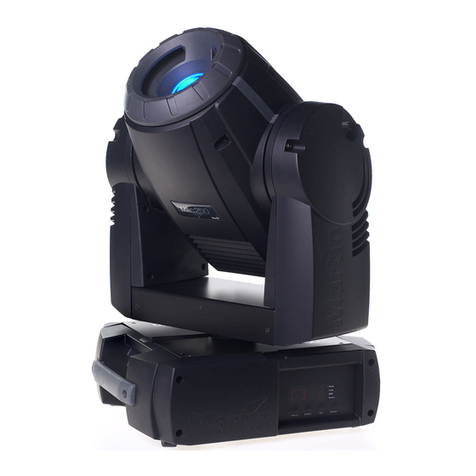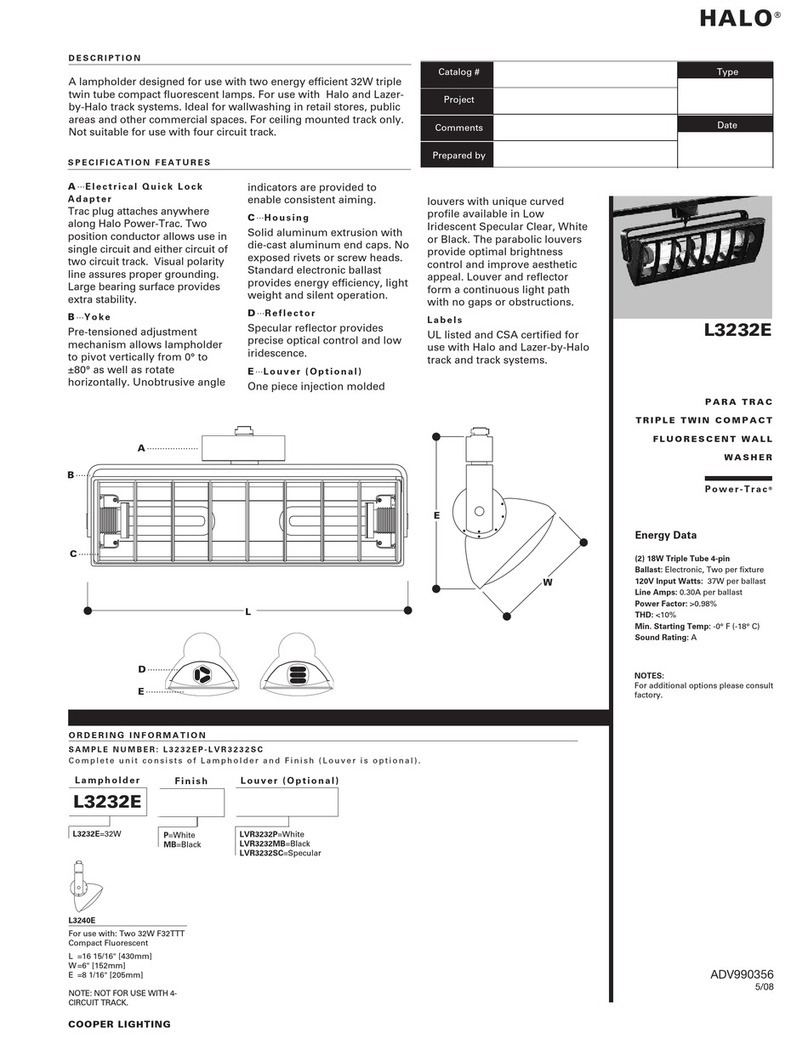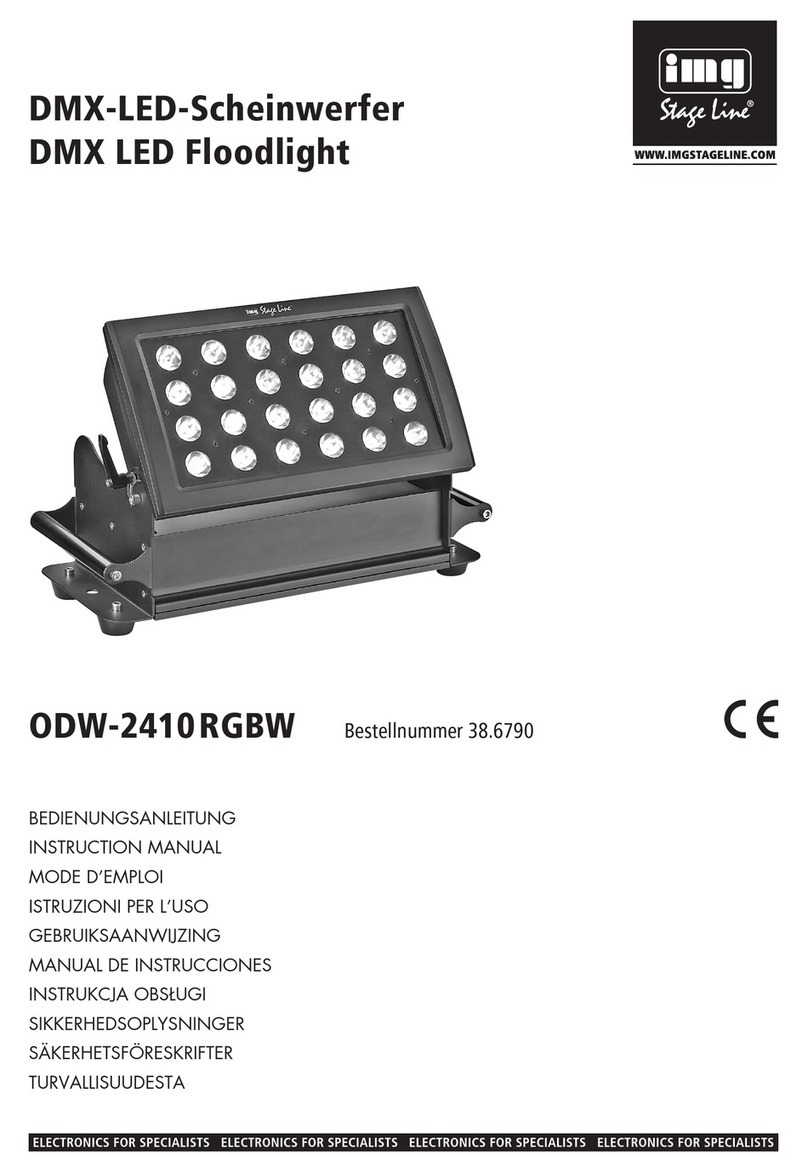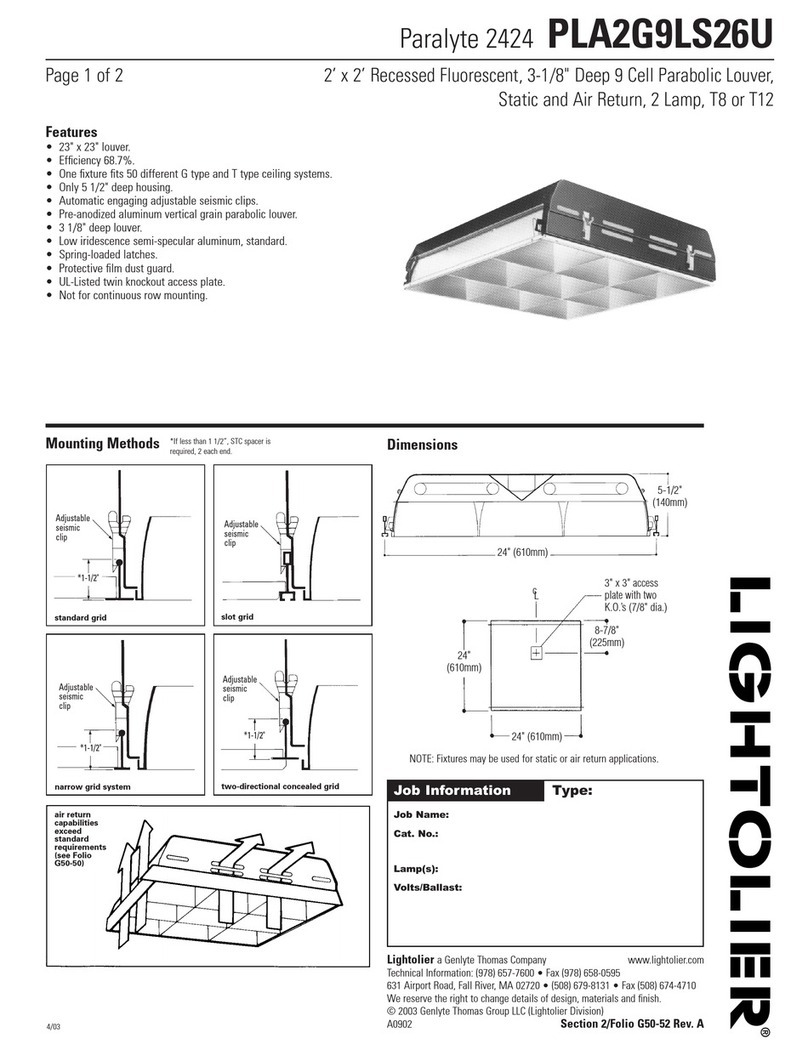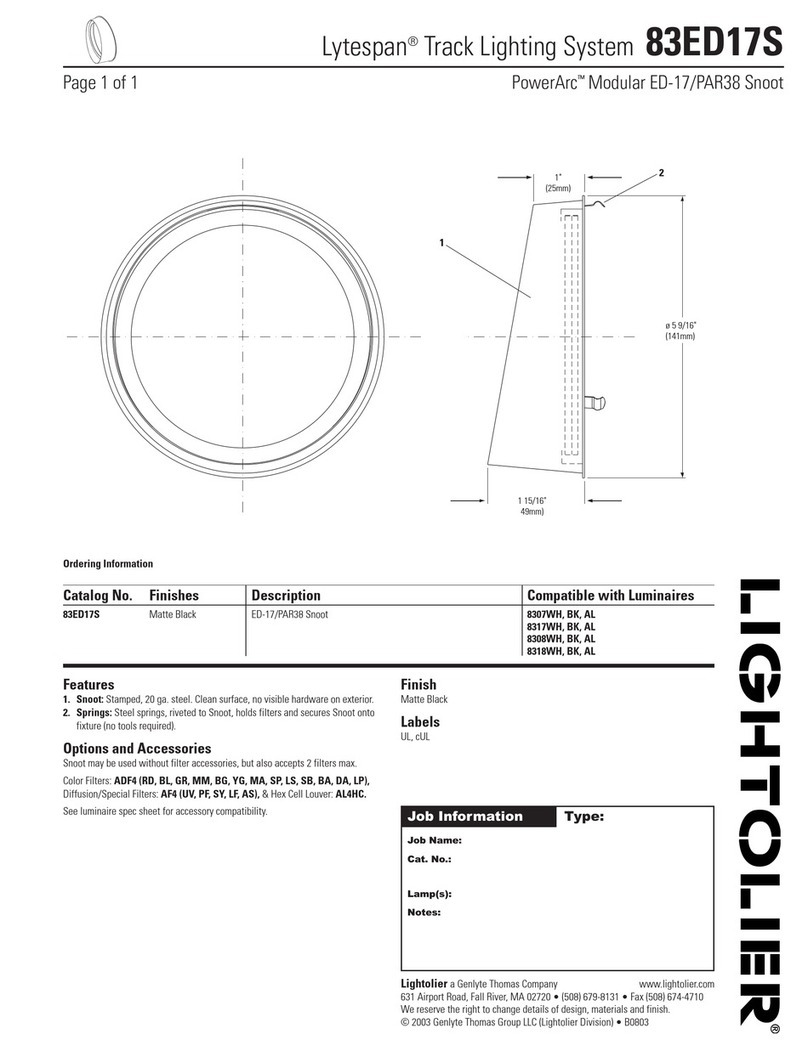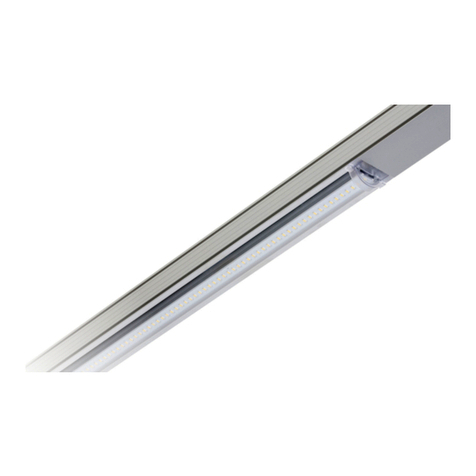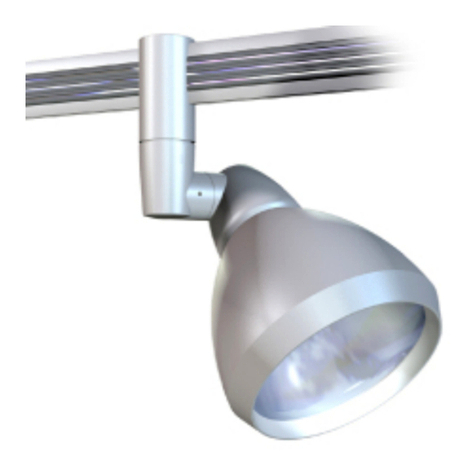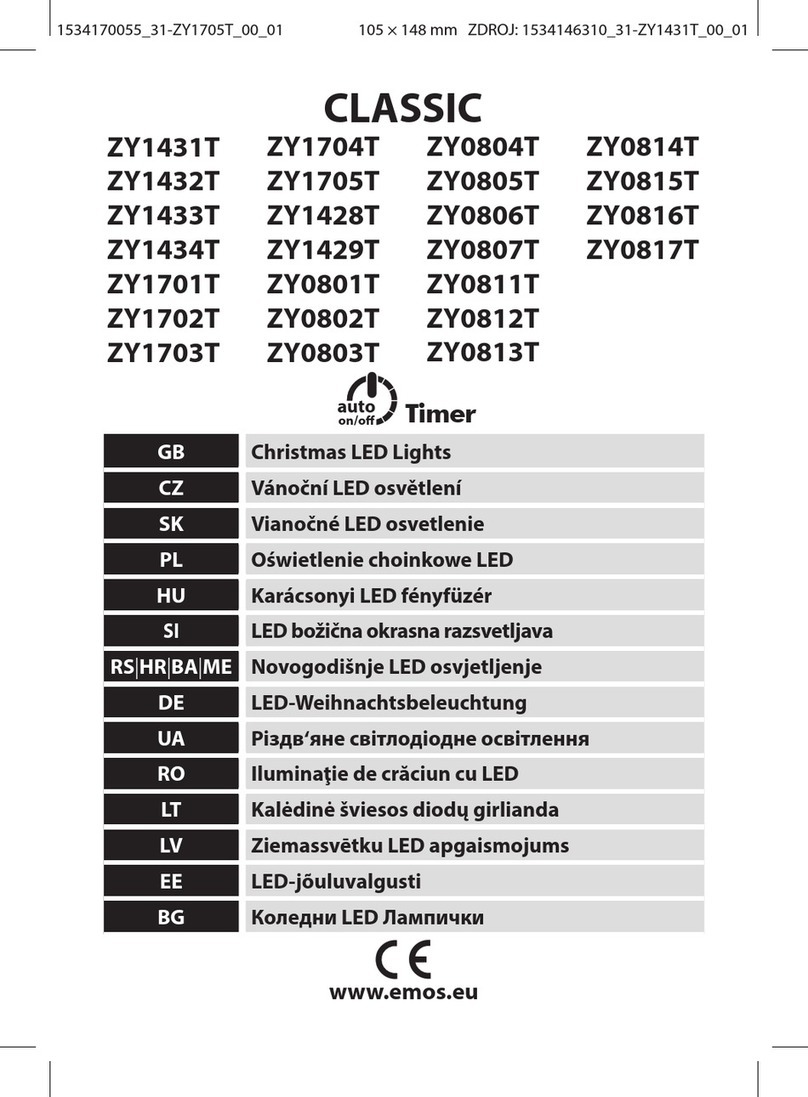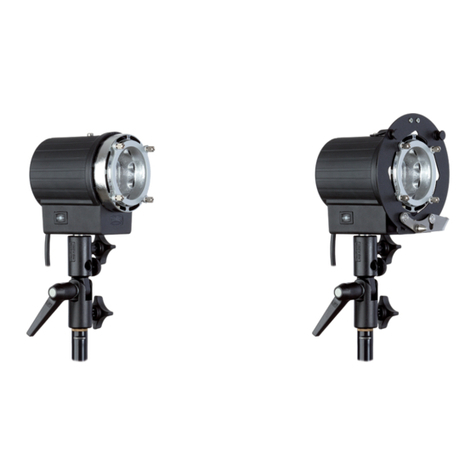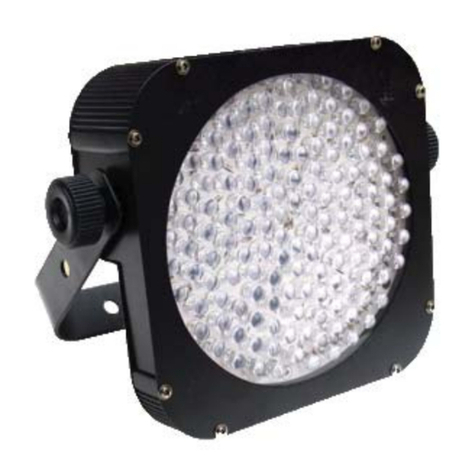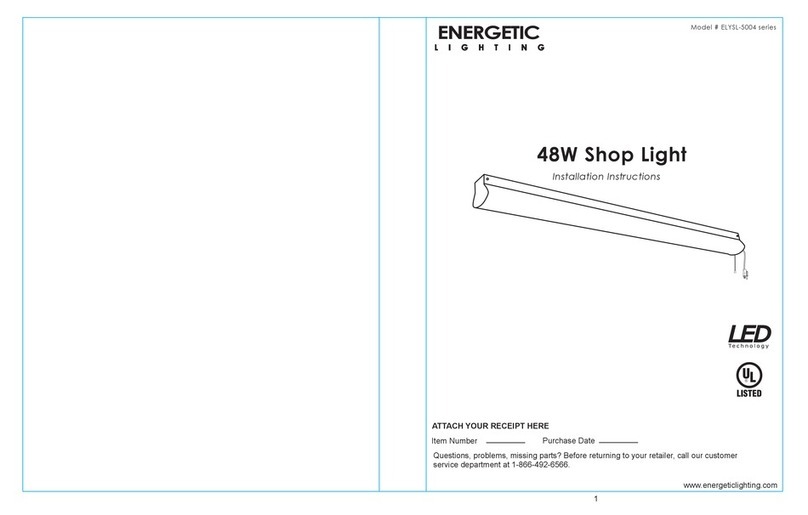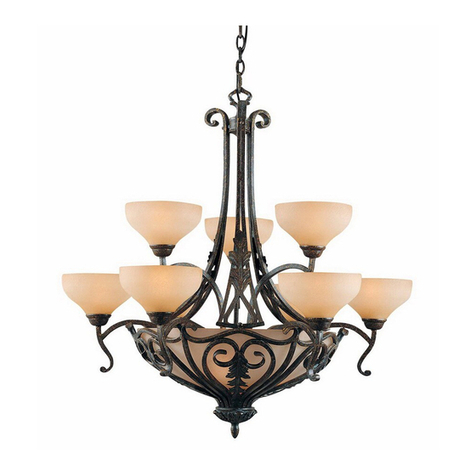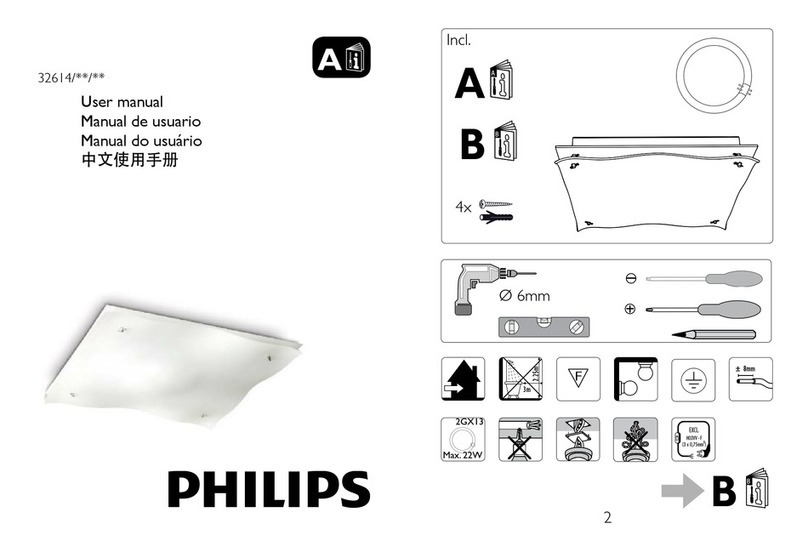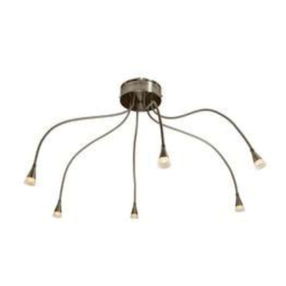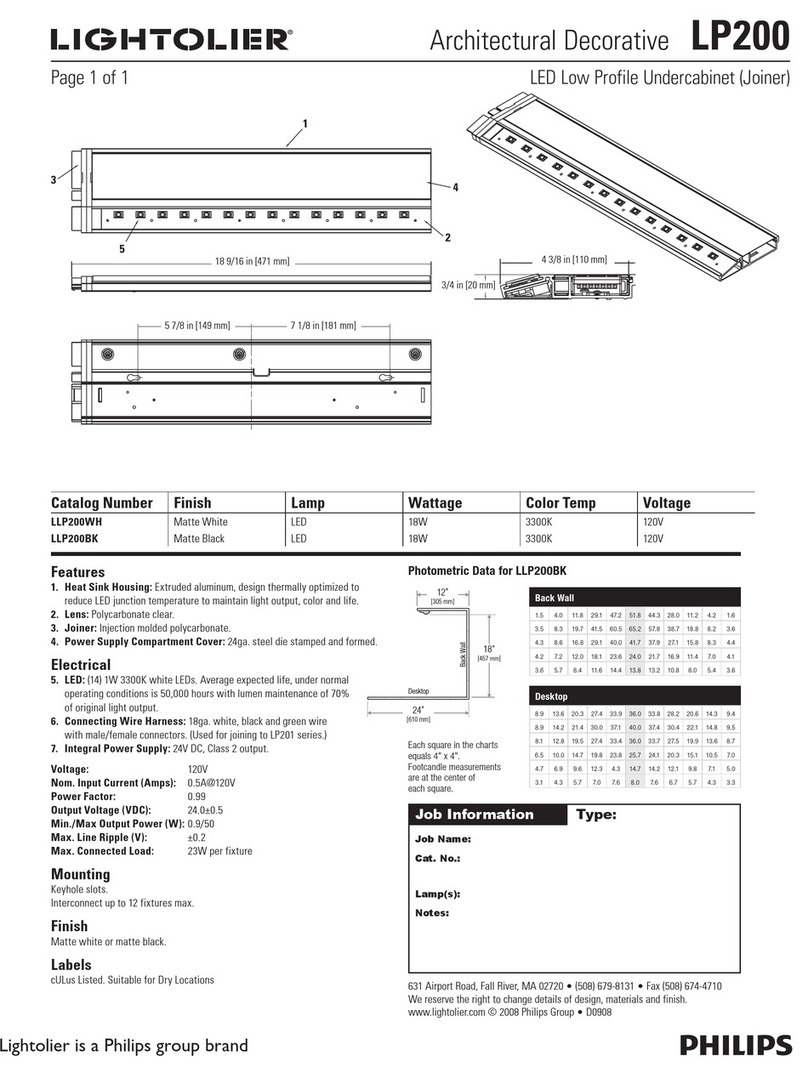Fuse type: 20mm 2A (T2AH)
anti-surge, ceramic body
Dimmer curve options (PERS > DIMR)
The PixelPar 90 provides four separate dimmer curve options which
determine exactly how the digital values received via the DMX link
are converted into emitter intensities. To alter the dimmer curve,
go to the PERS menu option, choose the DIMR option, select the
required setting and then press the button to save.
Note: Dimmer curve selection has no effect in 16bt mode, where a
single fixed high resolution curve is used.
The four dimmer curve options are as follows:
• FINE Closely resembles the original PixelPar 90 dimmer curve
with improved responses to low end values.
• TV Uses dimming frequencies that will eradicate any visible
flicker when viewed by video cameras and broadcast systems.
• TUNG Alters the dimming response to closely emulate the very
smooth action of standard tungsten bulbs. The TUNG setting can
be used with all operation modes.
• LGCY Provides full compatibility with the dimmer curves of
previous Pixel Range fixtures. Use this mode when mixing
PixelPar 90 fixtures with original PixelRange fixtures.
Using master mode to drive other units
This unit can control any number of other PixelRange fixtures via
DMX links, without the need for a control desk.
1 Set this unit as master (PERS > DATA > MAST) and ensure all
others are set to slave (PERS > DATA > SLAV). Connect all
fixtures via DMX daisy-chain.
Note: Don’t forget to terminate the devices at either end of the
chain - see ‘DMX links and termination’ left.
2 Set each slave to Mode > DMX.
3 Set the master to either create chases or static colours:
Chases: Select Mode > EF m and then use PROG > C1 and
C2 to create the required effects (see page 2).
Static colours: Select Mode > MANU and then use MAN >
RED, GRN and BLUE to mix the colour.
4 Set each slave DMX address (using ADDR > DMX) according to
the following:
18 cells are output in groups of 3 DMX channels to give RGB
values per cell (54 channels in total). Set the address of each
slave fixture according to which of the 18 cells you want them to
appear within, or to begin with (for multi-cell fixtures): (A001 for
cell 1, A004 for cell 2, ... A052 for cell 18).
Fuse access
The single fuse is located at the rear of the fixture near to the DMX
input connector. Use a small flat blade screw driver to twist the fuse
holder anticlockwise until the carrier can be extracted to reveal the
fuse.
White balance (PERS > WBAL)
Using different intensity mixes of the red, green and blue channels, it
is possible to create a range of open white colour temperatures. The
PixelPar 90 provides a white balance feature to assist you to quickly
reproduce any particular ‘white’ mix.
This feature requires you to first mix your white by adjusting the
emitter intensities, using either an external DMX input or the manual
controls from the menu. When the required white is achieved, you
then capture it. From that point, the PixelPar 90 will recreate your
white mix whenever all channels are faded to 100%.
To create a white balance
1 Ensure that the white balance is initially switched off - failure to
do this will result in an incorrect colour mix. To switch off, go to
PERS > WBAL > Y/N and select the NO option.
2 According to how you will initially mix the colours - either by
external DMX input or by manual menu control - use the menu to
select the appropriate mode: MODE > DMX or MODE > MANU.
3 Using either a DMX controller or the manual colour settings (MAN
> RED / GRN / BLUE), first set all the outputs to maximum and
then reduce the individual intensities until you reach the desired
white.
4 In the menu, go to PERS > WBAL > CAPT and press the
button to capture the current mix. The display will show DONE.
5 Your mix is now stored. To enable it, go to PERS > WBAL >
Y/N and select the YES option.
Notes:
• You can enable/disable the white balance feature at any time by
setting PERS > WBAL > Y/N to either NO or YES, as required.
• White balance settings will work with any dimmer curve option
(PERS > DIMR) and the stored settings are unaffected by
factory resets.
• To reset the white balance calibration, go to PERS > WBAL >
RSET and press the button.
• When white balance is enabled, during normal operation, the
four digit display will show the current mode prefixed with C+.
DMX links and termination
This section provides useful advice for gaining reliable operation
from your DMX installation:
• Use good quality flexible twisted pair cable that has a nominal
characteristic impedance of 120 ohms. Microphone cables have
a lower impedance and a higher capacitance, which can lead
to data errors.
• Use a daisychain arrangement to link fixtures together, so that
the output of one fixture is connected to the input of the next.
• Connect no more than 32 devices to a single DMX run. If further
fixtures are needed, then use a DMX booster to allow up to 32
more fixtures to be attached.
• Never split a DMX cable to form two branches (a Y-split). If
separate branches are required, use a powered DMX splitter.
• Ensure that the devices at each end of the daisychain are both
terminated using a 120 ohm resistor (usually contained within
a separate XLR connector that has no cable - the resistor forms
a link between pins 2 and 3). Control desks are often internally
terminated.
It is possible to get away with breaking some of the above rules,
particularly on smaller installations that have short cable runs and
few fixtures. However, results can be unpredictable and problems
will inevitably hit you at the very worst time: During your show.

